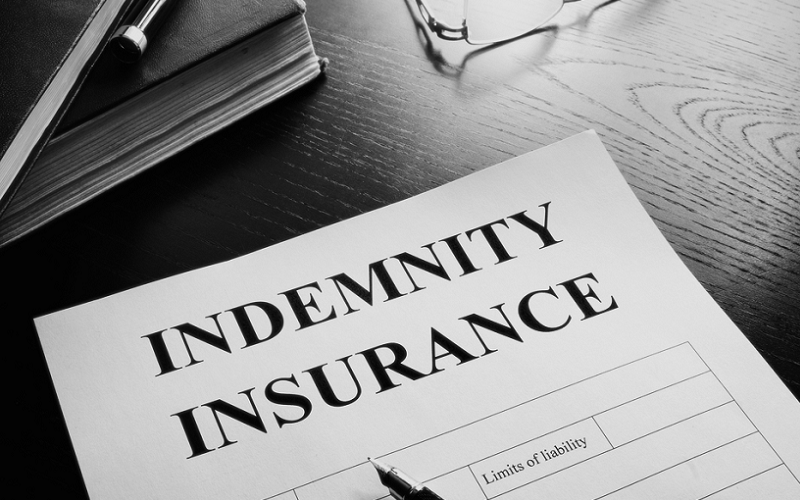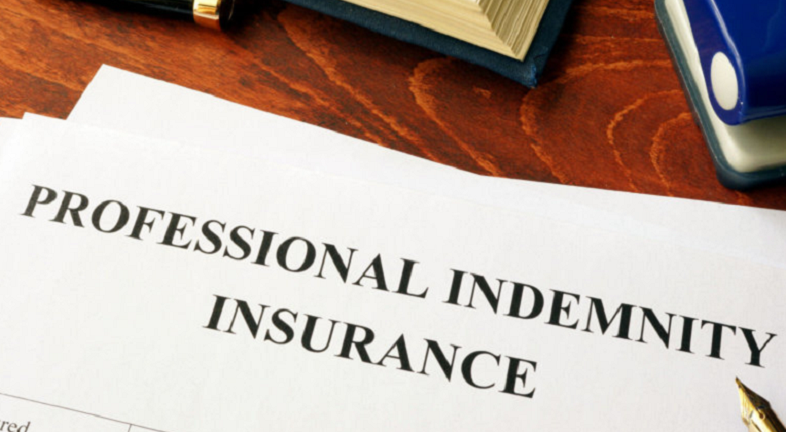
In the world of C-Corporations, the decisions and actions of directors and officers play a pivotal role in shaping the organization’s future. While these roles come with tremendous responsibilities, they also carry potential risks. Directors and officers often find themselves on the front lines, vulnerable to legal actions that may arise from their corporate decisions. It’s imperative that they are safeguarded against such risks, allowing them to make bold choices without fear of personal repercussions. Here we examine the mechanisms that shield these key corporate players, exploring the vital concept of indemnification and the importance of protective measures like Directors and Officers insurance.
Contents
Understanding Indemnification
Indemnification, while a common term in the corporate world, often remains an abstract concept to many. At its heart, it’s a promise—a guarantee of protection against potential losses. For C-Corp directors and officers, understanding the nuances of indemnification is paramount, as it forms a vital shield against potential legal ramifications stemming from their roles.
Definition and Purpose of Indemnification
Indemnification refers to the act of compensating someone for harm or loss. In the context of a C-Corporation, it typically pertains to the corporation’s commitment to cover certain legal fees, settlements, and judgments faced by directors and officers as a result of lawsuits arising from their corporate duties. The primary purpose is to protect these individuals from personal financial ruin due to claims made against them while serving the corporation.
The Legal Basis for Indemnification
The foundation for indemnification often stems from both statutory laws and corporate bylaws. Many jurisdictions, through their corporate codes, allow corporations to indemnify their directors and officers. However, the specifics of what can be indemnified and under what circumstances may vary. Moreover, individual C-Corps often include specific indemnification provisions in their bylaws, detailing the extent and limitations of such protection. Directors and officers should familiarize themselves with both statutory requirements and their corporation’s bylaws to gain a clear understanding of their coverage.
Common Indemnification Provisions in Corporate Bylaws
Most corporate bylaws contain standard clauses on indemnification, although they can be tailored to the corporation’s specific needs. Some of the most common provisions include:
Advance of Expenses
Before the final disposition of a claim, the corporation may advance the legal fees and other related costs to the director or officer, often under the condition that the individual will repay if it’s later determined that they aren’t entitled to indemnification [1].
Mandatory vs. Permissive Indemnification
Some bylaws mandate indemnification if certain conditions are met, while others leave it to the corporation’s discretion.
Exclusions
Not all actions or decisions by a director or officer will be covered. Bylaws often exclude indemnification in cases where there’s gross negligence, intentional misconduct, or if the director or officer personally profited inappropriately.

Key Reasons for Indemnifying C-Corp Directors and Officers
At first glance, the idea of indemnifying directors and officers might seem like a mere legal formality. However, it’s much more than just a protective clause in the bylaws. The act of indemnification carries substantial strategic importance for corporations, ensuring a foundation of trust and security for its leaders.
Mitigating Personal Financial Risk
Leading a corporation inherently comes with responsibilities that can be fraught with potential legal challenges. By indemnifying directors and officers, C-Corps ensure that these individuals won’t face personal financial ruin due to their professional roles. Whether it’s a business decision that backfires or unforeseen circumstances leading to lawsuits, indemnification provides a safety blanket, ensuring that personal assets are protected from corporate liabilities [2].
Attracting Top Talent to the Corporation
Competent and experienced leadership is essential for any successful corporation. One of the ways C-Corps lure top-tier talent is by offering robust protection measures, such as indemnification. When potential directors and officers are deciding between multiple corporate opportunities, knowing they’re shielded from potential personal financial harm can be a significant deciding factor. In essence, indemnification acts as a competitive advantage in the corporate recruitment world.
Encouraging Objective and Bold Decision-Making
For a corporation to thrive and innovate, its leaders need the freedom to make bold decisions without constantly second-guessing themselves due to potential personal repercussions. Indemnification fosters an environment where directors and officers can focus on what’s best for the company, rather than being overly cautious to protect their personal assets. This encourages forward-thinking strategies, ensuring the corporation remains competitive and agile in a dynamic business environment.

Scope of Indemnification for C-Corp D&O
The concept of indemnification, as established, offers a protective barrier for directors and officers, but it’s essential to understand its extent and limitations. Not every situation faced by a C-Corp’s leadership will fall under the umbrella of indemnification. By delineating its scope, corporations can set clear expectations for their leaders and ensure a harmonious relationship based on mutual understanding and trust.
What Typically is Covered
Delving into the specifics, indemnification commonly covers a range of scenarios, ensuring that directors and officers have a substantial safety net while navigating the intricate world of corporate leadership.
Defense Costs
Legal battles can be expensive. One of the primary benefits of indemnification is that it often covers the legal fees associated with defending a director or officer against claims or lawsuits arising from their corporate actions.
Settlements
There are instances when settling a lawsuit outside of court is the most pragmatic choice for a corporation. In such cases, indemnification can cover the settlement amounts, ensuring that the financial burden doesn’t fall on the individual director or officer [3].
Judgments
In situations where legal proceedings lead to a judgment against a director or officer, indemnification can step in to cover these judgments, shielding the individual from the brunt of the financial implications.
Limitations and Exclusions
While indemnification offers vast protection, it’s not without its boundaries. It’s essential for directors and officers to be aware of what is not covered, ensuring they tread carefully in areas of potential personal liability.
Actions Deemed Opposed to Company’s Interest
If a director or officer acts in ways that are deemed to be significantly against the interests of the corporation, indemnification may not be applicable. Such actions could include those that are seen as betrayals or grossly negligent.
Cases of Fraud or Personal Gain
Indemnification doesn’t offer protection in scenarios where a director or officer is found guilty of fraudulent activities or actions driven by personal gain at the corporation’s expense. This exclusion reinforces ethical corporate governance and ensures that leadership roles are carried out with integrity.

The Role of C-Corp Directors and Officers (D&O) Insurance
While indemnification serves as a formidable line of defense for directors and officers, it isn’t the only protection mechanism at their disposal. Another key layer of security that often complements indemnification is Directors and Officers (D&O) Insurance. This specialized insurance product is specifically tailored to cover the unique risks that corporate leaders face.
Definition and Purpose of D&O Insurance
D&O Insurance is a liability insurance coverage that protects directors and officers of a corporation against claims (and related legal expenses) made against them for alleged wrongful acts in their capacity as directors and officers. The primary objective of D&O Insurance is to offer financial protection against potential losses arising from decisions and actions made in the scope of performing regular corporate duties [4].
Differences between D&O Insurance and Indemnification
While both D&O Insurance and indemnification serve to protect corporate leaders, there are notable distinctions between the two:
Source of Protection
Indemnification is a promise made by the corporation to shield its leaders, using corporate assets if necessary. D&O Insurance, on the other hand, is an external insurance policy provided by an insurance company.
Coverage Breadth
While indemnification provisions in corporate bylaws might have specific limitations or exclusions, D&O Insurance can sometimes fill these gaps, offering coverage in areas where indemnification might fall short.
Financial Stability
In cases where a corporation faces insolvency or financial challenges, indemnification might not be entirely reliable. D&O Insurance ensures that there’s an external financial reservoir to tap into, even if the corporation itself struggles financially.
Key Coverages and Exclusions in D&O Policies
As with any insurance product, D&O policies come with specific inclusions and exclusions. It’s vital for directors and officers to understand the extent of their coverage.
Side A Coverage
This covers the directors and officers directly, especially in situations where the corporation cannot indemnify them (possibly due to financial difficulties or legal restrictions).
Side B Coverage
This reimburses the corporation when it indemnifies its directors and officers, essentially acting as a backup for the corporate indemnification provisions.
Side C Coverage (Entity Coverage)
This provides protection to the corporation itself, especially against securities-related claims.
While these coverages offer vast protection, there are typical exclusions in D&O policies, including fraud, personal profiting, and other illegal acts once proven in court.
Setting Up an Indemnification Agreement for C-Corp D&O
Having understood the importance and scope of indemnification, it becomes imperative for corporations to formalize this protection through clear and robust agreements. Setting up an indemnification agreement not only reaffirms the corporation’s commitment to its leaders but also ensures that the terms of protection are clearly outlined, minimizing ambiguities and potential disputes.
Importance of a Clear Agreement
While many corporations include indemnification clauses in their bylaws, having a separate, detailed indemnification agreement brings forth clarity and specificity. It acts as a reference point for directors and officers, enabling them to comprehend the exact parameters of their protection. Additionally, a clear agreement minimizes grey areas, ensuring that both the corporation and its leaders know their rights and responsibilities during potential claims or legal challenges [5].
Essential Elements of an Indemnification Agreement
A well-structured indemnification agreement encompasses several vital components.
Parties Involved
Clearly specify who the agreement covers. This could range from all directors and officers to specific individuals in tailored roles.
Scope of Coverage
Clearly delineate the situations and actions that fall under the purview of indemnification. Specify whether it includes legal fees, settlements, judgments, or any other related expenses.
Limitations and Exclusions
As with any protective measure, it’s crucial to outline what isn’t covered. This could include actions taken in bad faith, fraudulent acts, or any misconduct that’s against the corporation’s best interests.
Procedure for Claiming Indemnification
Provide a step-by-step guide on how a director or officer can claim indemnification. This should include any documentation needed, timelines, and the process for reviewing and approving such claims.
Duration and Termination
Specify the validity period of the agreement and conditions under which it can be terminated or modified.
Advance of Expenses
Clearly state whether the corporation will advance legal fees and other expenses before the final resolution of a claim, and under what conditions such advances need to be repaid.
Legal Compliance and Review
Given the legal weight of an indemnification agreement, it’s imperative that it aligns with relevant jurisdictional laws. Engaging legal counsel during the drafting process ensures that the agreement is both compliant and comprehensive. Regular reviews and updates to the agreement are also essential, given that corporate laws and business environments can evolve over time.
References
[1] Protecting Corporate Directors and Officers: Indemnification
[2] Indemnity and D&O Insurance: A brief summary for directors and officers
[3] Form of Indemnity Agreement for Directors and Executive Officers
[4] Indemnification of Directors and Officers
[5] Corporate Director and Officer Liability
